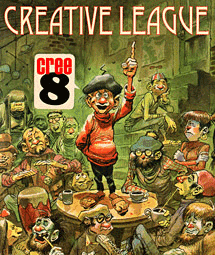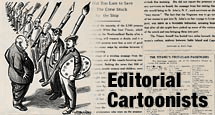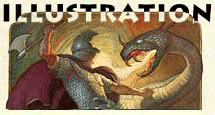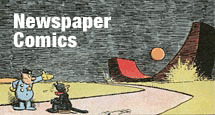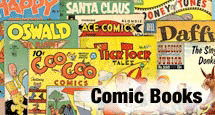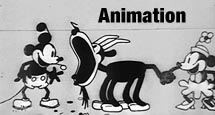This posting is a stub. You can contribute to this entry by providing information through the comments link at the bottom of this post. Please organize your information following the main category headers below….
Birth/Death
Bith: 1 May 1910
Death: Friday, May 18, 2001
Occupation/Title
Bio Summary
Maurice Noble started his outstanding career at the Disney Studio. He would work for many Hollywood studios from 1931 on, as an art director, production designer, and creative sketch artist.
During WWII Noble enlisted and was eventually assigned to the unit based at Fox Studios under Col. Frank Capra. Headed by Ted Geisel (Dr. Seuss) , the unit worked on posters, booklets, and the Privatte Snafu series.
In 1952 Noble went to work for Warner Bros. doing layouts for Chuck Jones. Here he would work on over 60 cartoons, working for Jones for over a decade.
Noble withdrew from working in the animation industry to pursue his interests in fine art and silkscreen prints. But he would rejoin Jones in the mid-1990s at Chuck Jones Film Productions. Here, he would start training younger artists, called the Noble Boys (and girls).
Early Life/Family
Education/Training
Maurice Noble was born in Spooner, Minnesota and growing up in New Mexico and Southern California. He studied at the Chouinard Art Institute in the early 1930s until he had to leave for financial reasons.
Career Outline
1934 Recruited for job at Disney
1941 Joins Disney Animator’s Strike
laid off soon after the end of strike
WWII Noble enlists in Army Signal Corps
Assigned to unit of Col. Frank Capra
1952 Warner Brothers to work on Layouts for Chuck Jones
1963 Leaves Warner Brothers and joins Tower 12 Productions (would
become the MGM animation unit).
Late 1970s-1980s Noble pulls away from working in the animation industry
Creating fine art and hand pulled silkscreen prints.
1989 Development work on Steven Spielberg’s Tiny Toon Adventures
Mid-1990s Works with Chuck Jones again at Chuck Jones Film Productions
Art director and color consultant
Mentors younger artists (known as the ‘Noble Boys and Girls’)
Comments On Style
Influences
Personality
Anecdotes
Miscellaneous
Filmography
Snow White and the Seven Dwarfs (1937) (background artist)
Dumbo (1941) (character designer) ?
Rabbit Seasoning (1952) (layout artist) ?
From A to Z-Z-Z-Z (1953) (layout artist)
Forward March Hare (1953) (layout artist)
Kiss Me Cat (1953) (layout artist)
Duck Amuck (1953) (layout artist)
Much Ado About Nutting (1953) (layout artist)
Wild Over You (1953) (layout artist)
Duck Dodgers in the 24½th Century (1953) (layout artist)
Bully for Bugs (1953) (layout artist)
Zipping Along (1953) (layout artist)
Duck! Rabbit, Duck! (1953) (layout artist)
Punch Trunk (1953) (layout artist)
Feline Frame-Up (1954) (layout artist)
No Barking (1954) (layout artist)
The Cats Bah (1954) (layout artist)
Claws for Alarm (1954) (layout artist)
Bewitched Bunny (1954) (layout artist)
Stop! Look! and Hasten! (1954) (layout artist)
Lumber Jack-Rabbit (1954) (layout artist)
My Little Duckaroo (1954) (layout artist)
Sheep Ahoy (1954) (layout artist)
Ready.. Set.. Zoom! (1955) (layout artist)
Two Scent’s Worth (1955) (layout artist)
90 Day Wondering (1956) (layout artist)
Deduce, You Say (1956) (layout artist)
To Hare Is Human (1956) (layout artist)
Drafty, Isn’t It? (1957) (layout artist)
Scrambled Aches (1957) (layout artist)
Ali Baba Bunny (1957) (layout artist)
Go Fly a Kit (1957) (layout artist)
Boyhood Daze (1957) (layout artist)
Steal Wool (1957) (layout artist)
What’s Opera, Doc? (1957) (layout artist)
Zoom and Bored (1957) (layout artist)
Touché and Go (1957) (layout artist)
Gateways to the Mind (1958) (TV) (animation designer)
Robin Hood Daffy (1958) (layout artist)
Hare-Way to the Stars (1958) (layout artist)
Whoa, Be-Gone! (1958) (layout artist)
To Itch His Own (1958) (layout artist)
Hip Hip-Hurry! (1958) (layout artist)
Cat Feud (1958) (layout artist)
Baton Bunny (1959) (layout artist)
Who Scent You? (1960) (layout artist) ?
Ready, Woolen and Able (1960) (layout artist)
Hopalong Casualty (1960) (layout artist)
“The Bugs Bunny Show” (1960) TV Series (layout artist)
High Note (1960) (layout artist)
Zip ‘N Snort (1961) (layout artist)
The Mouse on 57th Street (1961) (layout artist)
A Scent of the Matterhorn (1961) (layout artist) (as M. Maurice Nobelle)
Woolen Under Where (1963) (layout artist)
Zip Zip Hooray! (1965) (layout artist)
Roadrunner a Go-Go (1965) (layout artist)
“The Road Runner Show” (1966) TV Series (layout artist)
“The Bugs Bunny/Road Runner Hour” (1968) TV Series (layout artist)
Bunny’s 1001 Rabbit Tales (USA: short title) ?
Bugs Bunny’s 3rd Movie: 1001 Rabbit Tales (1982) (layout artist) ?… aka Bugs
Fantastic Island (USA: short title
Daffy Duck’s Movie: Fantastic Island (1983) (layout artist) ?… aka Daffy Duck’s
“The Bugs Bunny/Looney Tunes Comedy Hour” (1985) TV Series (layout artist)
“The Bugs Bunny and Tweety Show” (1986) TV Series (layout artist)
Daffy Duck’s Quackbusters (1988) (layout artist)
“Merrie Melodies: Starring Bugs Bunny and Friends” (1990) TV Series (layout artist)
“That’s Warner Bros.!” (1995) TV Series (layout artist)
From Hare to Eternity (1996) (color consultant)
Father of the Bird (1997) (color consultant)
Pullet Surprise (1997) (color consultant)
Now Hear This (1962) (co-director)
A Sheep in the Deep (1962) (co-director)
Nelly’s Folly (1961) (co-director)
Beep Prepared (1961) (co-director)
The Abominable Snow Rabbit (1961) (co-director)
Compressed Hare (1961) (co-director)
Director – filmography:?
“The Bugs n’ Daffy Show” (1996) TV Series ?
Bugs Bunny’s Howl-Oween Special (1978) (TV) ?
“The Bugs Bunny/Road Runner Hour” (1968) TV Series
The Bear That Wasn’t (1967) (co-director)
Cannery Rodent (1967) (co-director)
Cat and Dupli-cat (1967) (co-director)
Jerry, Jerry, Quite Contrary (1966) (co-director)
The Dot and the Line (1965) (co-director) ?… aka The Dot and the Line: A Romance in Lower Mathematics
Ah, Sweet Mouse-Story of Life (1965) (co-director)
Bad Day at Cat Rock (1965) (co-director)
The Brothers Carry-Mouse-Off (1965) (co-director)
The Cat’s Me-Ouch (1965) (co-director)
Duel Personality (1965) (co-director)
Haunted Mouse (1965) (co-director)
I’m Just Wild About Jerry (1965) (co-director)
Of Feline Bondage (1965) (co-director)
Tom-ic Energy (1965) (co-director)
The Year of the Mouse (1965) (co-director) ?… aka Tom Thump
War and Pieces (1964) (co-director)
The Iceman Ducketh (1964) (co-director)
The Cat Above and the Mouse Below (1964) (co-director)
Is There a Doctor in the Mouse? (1964) (co-director)
Much Ado About Mousing (1964) (co-director)
Snowbody Loves Me (1964) (co-director)
The Unshrinkable Jerry Mouse (1964) (co-director)
To Beep or Not to Beep (1963) (co-director)
Transylvania 6-5000 (1963) (co-director)
Mad as a Mars Hare (1963) (co-director)
Hare-Breadth Hurry (1963) (co-director)
I Was a Teenage Thumb (1963) (co-director)
Pent-House Mouse (1963) (co-director)
Martian Through Georgia (1962) (co-director)
Louvre Come Back to Me! (1962) (co-director)
Zoom at the Top (1962) (co-director)
Adventures of the Road-Runner (1962) (co-director)
Production Designer:
It’s Everybody’s Business (1954) ?
The Incredible Mr. Limpet (1964) (animation) ?
Jerry-Go-Round (1965)
The Dot and the Line (1965) ?… aka The Dot and the Line: A Romance in Lower Mathematics
Puss ‘n’ Boats (1966)
Art Director:
Duck Dodgers and the Return of the 24½th Century (1980) (TV) ?The Great American Chase (1979) ?… aka The Bugs Bunny/RoadRunner Movie (USA: video title)
Dr. Seuss on the Loose (1973) (TV)
The Lorax (1972) (TV)
The Cat in the Hat (1971) (TV)
The Phantom Tollbooth (1970) ?… aka The Adventures of Milo in the Phantom Tollbooth
Horton Hears a Who! (1970) (TV) ?
The Bear That Wasn’t (1967)
Advance and Be Mechanized (1967)
Guided Mouse-ille (1967) ?… aka Guided Mouse-ille or Science On a Wet Afternoon
The Mouse from H.U.N.G.E.R. (1967)
O-Solar-Meow (1967)
Purr-Chance to Dream (1967)
Rock ‘n’ Rodent (1967)
Surf-Bored Cat (1967)
How the Grinch Stole Christmas! (1966) (TV) ?… aka Dr. Seuss’ How the Grinch Stole Christmas! (USA: complete title)
The A-Tom-inable Snowman (1966)
Catty-Cornered (1966)
Filet Meow (1966)
Love Me, Love My Mouse (1966)
Chariots of Fur (1994) ?
Timber Wolf (2001) (V) (co-art director) ?… aka Chuck Jones’ Timber Wolf (USA: complete title)
?
Actor:
Al Tudi Tuhak (1999) (voice) …. Narrator?
Writer:
“Tiny Toon Adventures” (1990) TV Series (writer) ?… aka Steven Spielberg Presents… Tiny Toon Adventures (USA) ?
Art Department:
Adventures of the Road-Runner (1962) (designer) ?
Honors
Annie Award: Winsor McCay Award 1987
Related Links
http://www.nobletales.com/
Interview with Maurice Noble by Harry McCracken for Animato, 1991
http://www.harrymccracken.com/noble.htm
Interview with Maurice Noble by Karl Cohen for Animation World Magazine, 1998
http://mag.awn.com/index.php?ltype=pageone&article_no=114
Bibliographic References
http://www.nobletales.com/
http://www.imdb.com/name/nm0633637/
http://en.wikipedia.org/wiki/Maurice_Noble
“Chuck Amuck” by Chuck Jones
BIO-AAA-494
Contributors To This Listing
To make additions or corrections to this listing, please click on COMMENTS below…





